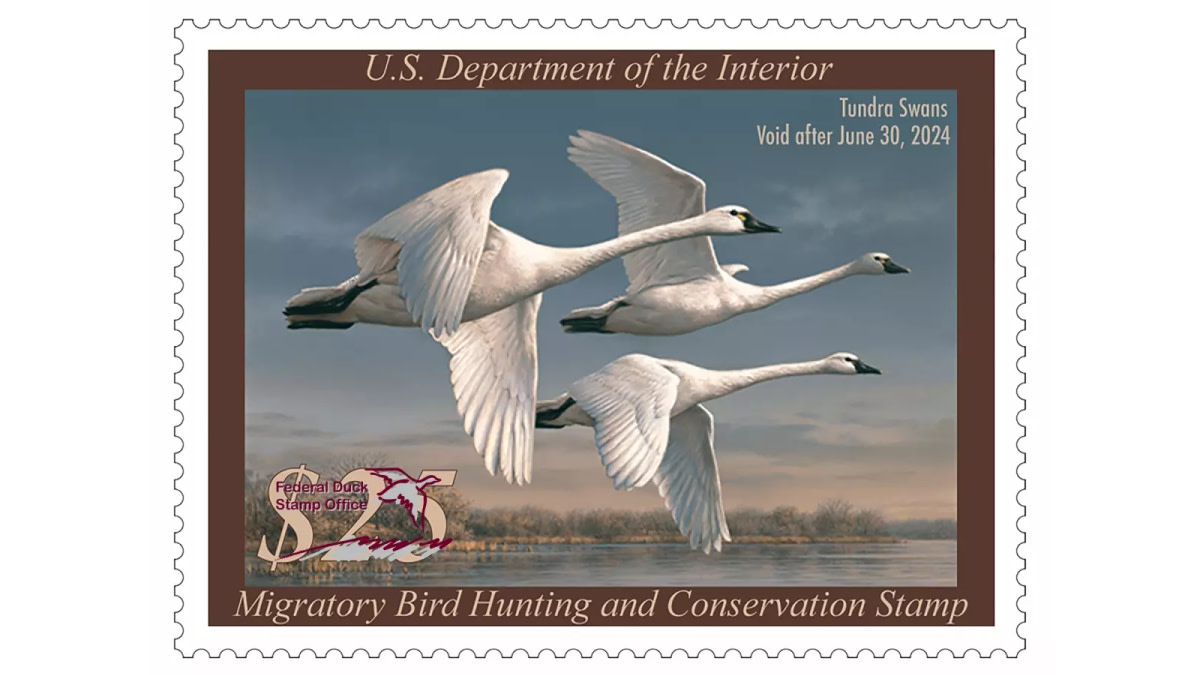
The US Congress just passed legislation that will make it easier for waterfowl hunters to comply with the law. The Duck Stamp Modernization Act is a bill that makes the Federal Duck Stamp electronically accessible to waterfowl hunters. Historically, a hunter must possess the physical stamp in order to hunt legally. Recently, the rules shifted slightly so hunters could use an electronic stamp for up to 45 days after purchasing online until their physical stamp arrived through the mail.
This act allows hunters to purchase the $25 Federal Duck Stamp online while also removing the requirement to possess a physical copy of the stamp while in the field. (And those who wish to uphold the legacy of carrying physical stamps can still certainly do so.)
The bipartisan legislation was introduced by Rep. Garrett Graves earlier this year. The bill was championed by U.S. Senators John Boozman (R-AR), Joe Manchin (D-WV), Roger Marshall, M.D. (R-KS), and Angus King (I-ME), and cosponsored by Senators Tom Carper (D-DE), Shelley Moore Capito (R-WV), and Bill Cassidy, M.D. (R-LA). Companion legislation was introduced in the House of Representatives by Congressmen Garret Graves (R-LA) and Mike Thompson (D-CA). This legislation passed the Senate in July and just passed the House today, December 12, by a vote of 403-20. The bill now moves to President Joe Biden’s desk to be signed into law.
“This legislation will improve access for sports enthusiasts who enjoy this outdoor tradition and are committed to the preservation of waterfowl habitat. I’m proud Congress has advanced this legislation to the president’s desk to be signed into law,” said Boozman, a member of the Migratory Bird Conservation Commission, which invests federal funds generated by the Duck Stamp in wetland preservation.
The Duck Stamp was conceived in 1934 when Congress passed and President Franklin D. Roosevelt signed the Migratory Bird Hunting Stamp Act (later amended to the Migratory Bird Hunting and Conservation Act). The first stamp was designed by J.N. "Ding" Darling, then director of the Bureau of Biological Survey (forerunner to today's U.S. Fish & Wildlife Service).
Though the stamp started out at $1-a-pop and has grown to $25, you know it’s money well-spent because 98% of the purchase price goes directly to help acquire and protect wetland habitat and purchase conservation easements. Overall, $1.1 billion dollars have been raised from sales of Federal Duck Stamps, conserving over 6 million acres of land within the National Wildlife Refuge System.
The stamp has been and continues to be, more than just a legal requirement to hunt waterfowl. It’s a unique crossroads where hunting, conservation, and artistry meet. Although this act will allow hunters to carry electronic copies in lieu of physical stamps, the annual art contest will carry on, and conservation dollars will go into providing and caring for crucial wildlife habitat. That much hasn’t changed. Things have just been, as the title of the bill implies, “modernized.”
“This is commonsense legislation that will make buying a duck stamp much easier and help make duck hunting more accessible to all waterfowlers,” Ducks Unlimited CEO Adam Putnam said. “Now that the stamp is fully electronic, we hope that more birders, anglers, and conservationists will join us to increase the number of stamps purchased each year so that more wildlife habitat can be protected.”
Feature image is the ‘23-’24 Federal Duck Stamp, via USFWS.
